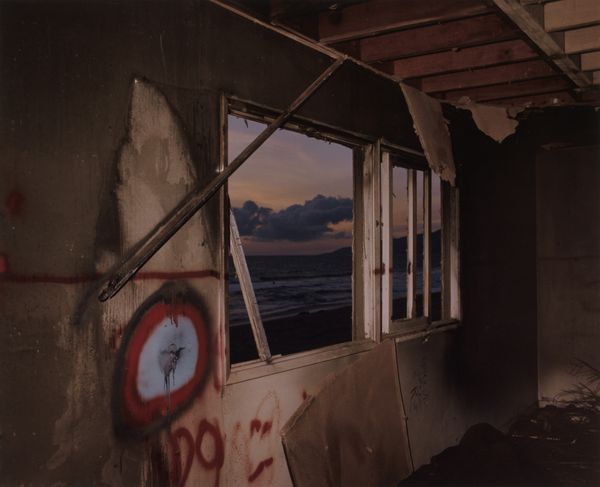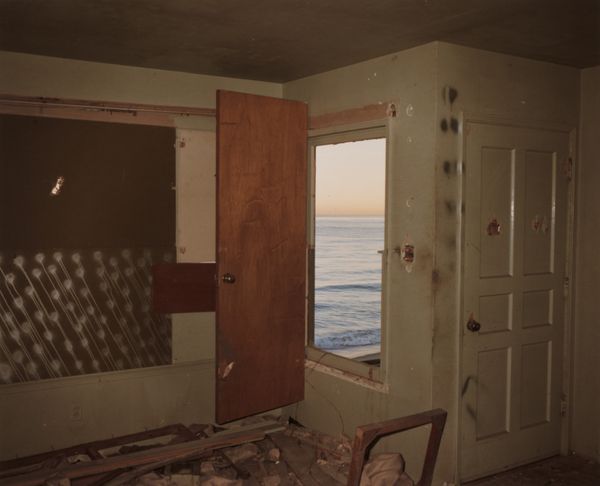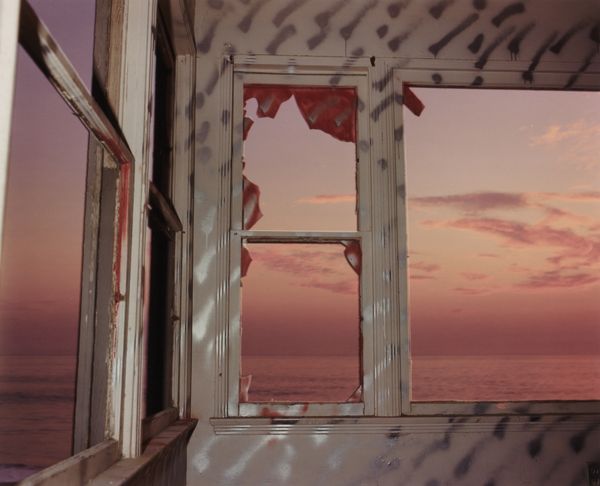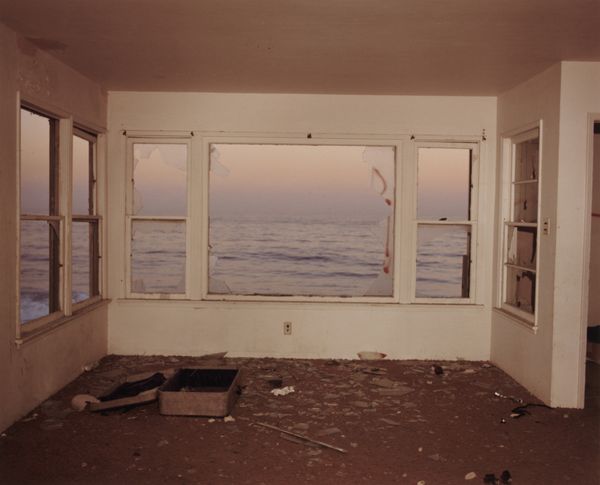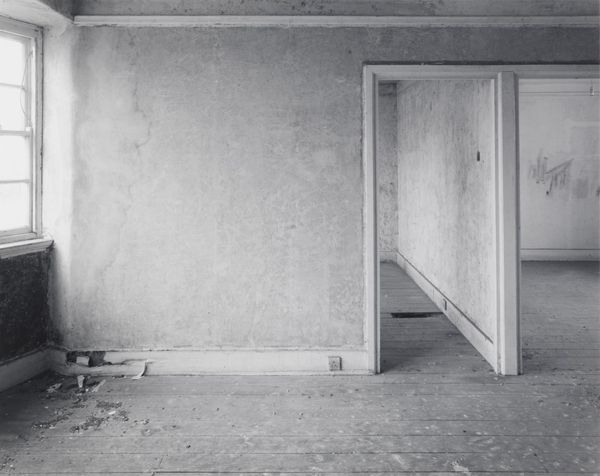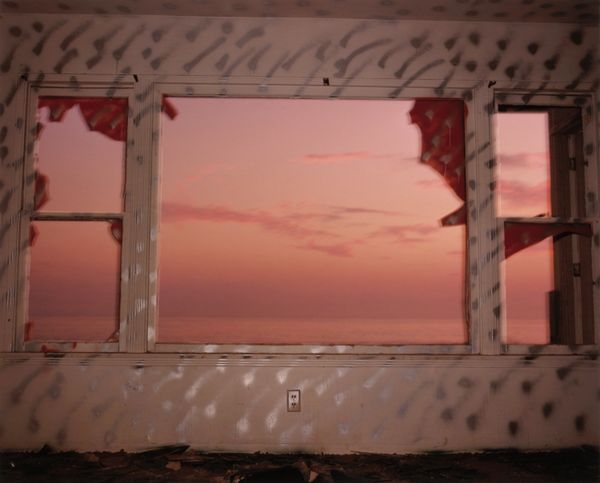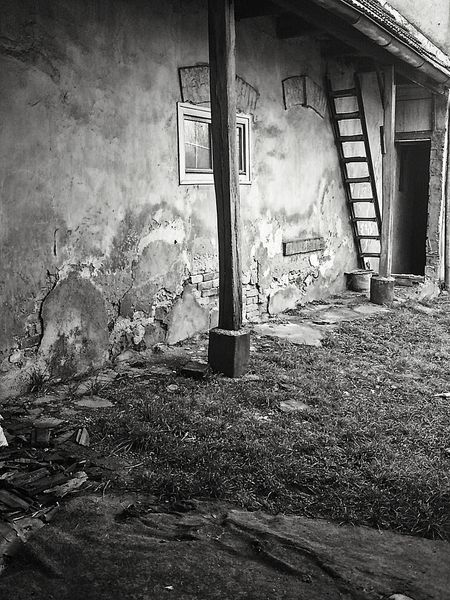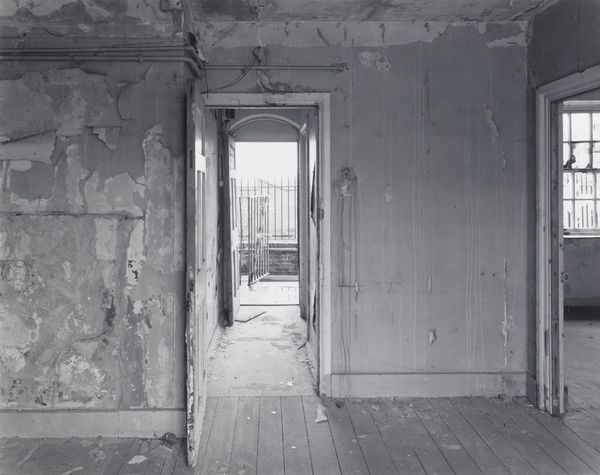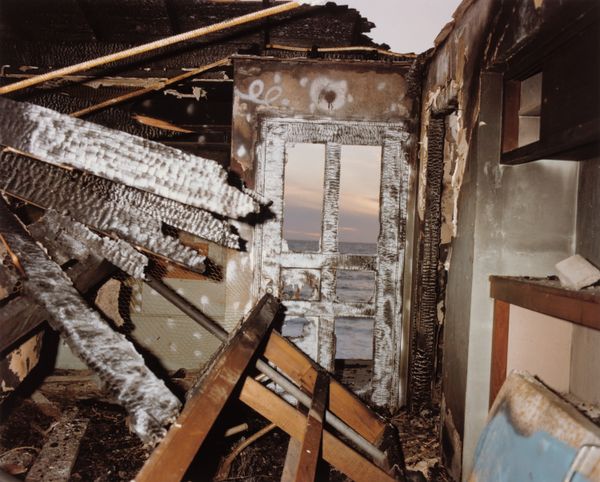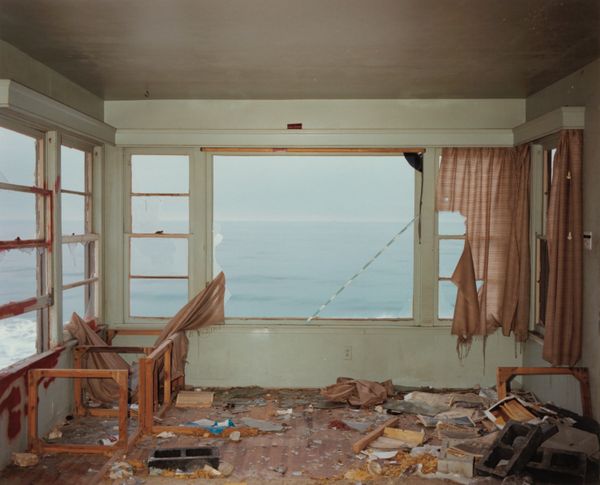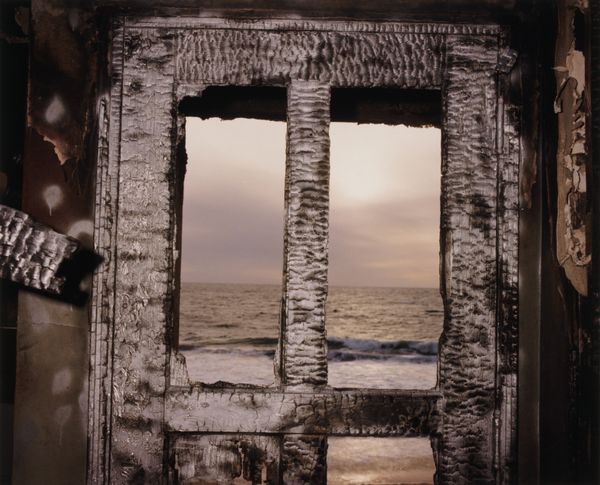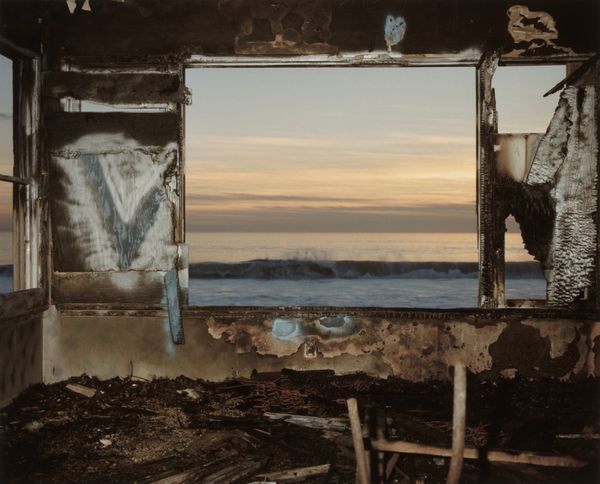
photography, site-specific, gelatin-silver-print
#
film photography
#
conceptual-art
#
postmodernism
#
landscape
#
outdoor photography
#
photography
#
derelict
#
site-specific
#
gelatin-silver-print
#
abstraction
Dimensions: image: 24.77 × 30.48 cm (9 3/4 × 12 in.) sheet: 27.94 × 35.56 cm (11 × 14 in.)
Copyright: National Gallery of Art: CC0 1.0
Curator: We are looking at “Zuma #7” a gelatin-silver print by John Divola, created in 1977 as part of his Zuma series. It’s quite evocative. What is your first impression? Editor: A somber sort of beauty. A sense of decay is prevalent. The remnants of human habitation juxtaposed against the vastness of the ocean create a melancholic but powerful atmosphere. Curator: The location is key. Divola photographed abandoned houses near Zuma Beach in Malibu. He interacted with these spaces by spray-painting graffiti and then photographing them. This created a dialogue between destruction and creation. I'm interested in that long metal wire between the doorway. Editor: The ocean acts as a stage backdrop here, visible through the doorway of this derelict building. It reflects a complex interplay of private and public spaces. It prompts questions about ownership, access, and the relationship between humanity and the environment. This idea of reclaiming space. Who abandoned this space and why is that relevant in the seventies in California? Curator: Indeed. Abandonment holds meaning. We often see these liminal spaces—abandoned structures, places between states—as ripe for symbolic projection. These spaces echo broader cultural anxieties and can represent forgotten histories, reflecting societal shifts or economic downturns. What does abandonment communicate here through visual symbols? Editor: There's definitely commentary here, albeit subtly done. Postmodernism moved toward blurring the lines between art and life. By staging these interventions, Divola critiques traditional notions of representation and engages in what could be termed site-specific art, a commentary on consumerism and environmental neglect that was particularly potent in that era and place. Curator: He reframes the derelict building as a canvas, and his spray paint serves as a symbolic act of reclaiming or commenting on that abandonment. Editor: I find it impactful how the image balances the chaos of decay with the serene expanse of the sea. It's a striking meditation on impermanence and change. What initially appeared as desolation now reveals itself as a poignant reminder of human intervention and its consequences. Curator: Absolutely. The visual layers echo emotional complexity. Thank you for illuminating it through sociohistorical understanding. Editor: Thank you! Reflecting on this artwork inspires questions about the lifespan of the spaces we occupy.
Comments
No comments
Be the first to comment and join the conversation on the ultimate creative platform.
